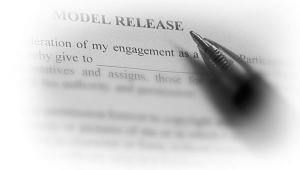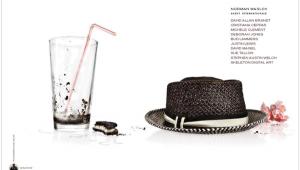Photographers And Copyrights—Part 2; Fair Use, Derivative Rights, And More
“Bloggers think that a use of a photograph in a web blog is covered by fair use simply because it is not usually done for profit, and they are ‘commenting’ on the news. This is not necessarily the case.”
Last year in my column I tackled the important issue of copyright. (Editor’s Note: Go to our homepage at www.shutterbug.com and type in Copyrights.) Unless you are steadily employed by a firm as a photographer or sign a “work for hire” agreement, you need to pay close attention to this topic because you are creating property and ownership when you create images. You create it, you own it. Now that you have this property it is your job to understand how to manage it! Dealing with copyright issues—whether the work is for yourself, your portfolio, or clients—must be something you work to better understand to keep yourself and your clients legally protected.
For this column I spoke with intellectual property attorney Nancy E. Wolff, who is a partner at Cowan, DeBaets, Abrahams & Sheppard LLP (www.cdas.com), located in New York. Her firm’s clients include the Picture Archive Council of America, individual photographers, authors, illustrators, designers, and publishers. She counsels and represents clients in copyright law, trademarks, licensing, contracts, rights of publicity and privacy and libel, and is an active speaker on the conference and workshop circuit on the subject of copyright. Her book The Professional Photographer’s Legal Handbook is published by Allworth Press.
Shutterbug: How is a photographer (or photo client) protected by the fair use doctrine of copyright law?
Nancy Wolff: Fair use is outlined in section 107 of the Copyright Act and is based on a history of court decisions that permit the limited use of copyrighted work for mostly scholarly and nonprofit purposes. As such it embodies First Amendment principles in promoting criticism, commentary, and teaching. Our fair use statute provides guidelines for a defense of an infringement rather than rules. It is generally not meant for commercial use of copyright-protected work without permission.
The examples of use protected by fair use are: criticism, news reporting, teaching/scholarship, and research. If the use qualifies as fair use, the use will not be an infringement of copyright. The facts of each case must be analyzed and the courts will balance the different factors to determine if a factor weighs in favor of fair use or not. Relevant factors include whether the use is commercial or educational, if the work is more creative or factual, how much of the work was borrowed, and what effect the second use has on the market for the first. An example of fair use might be critiquing a work in an exhibit where you are commenting on the photo itself. Merely illustrating the news with a photograph is not fair use.
Parody is a form of commercial use that may qualify as fair use with at least one famous test case. The Demi Moore nude-profile Vanity Fair magazine cover was copied by a movie studio for a poster promotion of the film Naked Gun 331⁄3. The photographer, Annie Leibovitz, sued the movie studio for copyright infringement and lost when the defendant argued parody and prevailed. The defendant established that they were making a social comment on her photograph. The movie studio photograph was copied exactly from the famous and controversial Vanity Fair cover, just changing the head on the nude, pregnant body from Ms. Moore to Mr. Nielsen.
SB: Another question that comes up a lot is who gets sued when copyright is violated? Can a photographer say “I didn’t know what the client was going to do” to stay out of litigation?
NW: Everyone in the chain of infringement will be held accountable and can potentially be held liable. The law has different levels of accountability but they can include the company that directly infringed, employees or individuals (such as the freelance photographers) who participated in the infringement or should have supervised, and anyone who publishes the infringing image whether they had knowledge or not.
SB: What issues do we have to deal with when using someone’s images/text on our own website or in a blog? Also, what is the copyright law protection for deleting or modifying my website visitors’ comments?
NW: Bloggers think that a use of a photograph in a web blog is covered by fair use simply because it is not usually done for profit, and they are “commenting” on the news. This is not necessarily the case. Just because a story is newsworthy does not permit you to republish the story together with the photos and be protected by fair use. When you are blogging about an event you cannot use a photo to illustrate your blog entry without permission of the original photographer. The exception is if the blog is a critique of the photo itself, then the use of the photo without permission could be protected by fair use.
If your website allows third parties to comment on your statements in the blog, you may want to add a disclaimer for “User Generated Content” on your website that says you (the host) can delete or remove any offensive language. This area of law is covered in the Communications Decency Act for the Protection of Publications of 1996. Section 230 of the Communications Decency Act grants interactive online services of all types, including blogs, forums, and listservs, broad immunity from tort liability such as defamation, so long as the information at issue is provided by a third party. Even if you exercise traditional editorial control, you will not lose immunity. However, the authors of the online statements are not immune from liability.
SB: Does a photo client need to pay for work before they get permission from the original photographer? Can there be an infringement if the work was not paid for?
NW: Copyright permission can be granted without payment! Copyright infringement is not based on whether the infringed work was paid for; permissions and payments are two different things. Copyright consists of nonphysical rights separate from the physical work and includes publication rights, reproduction rights, derivative rights, and public display. The Right of First Sale gives the owner of the physical work purchased from you the right to sell it. If, however, other rights such as the right to reproduce the image or the right to adapt an image are requested, the owner needs to purchase usage rights from the photographer.
SB: Please elaborate on how “derivative works” relate to today’s commercial photographer and
his/her clients.
NW: Defined by the Copyright Act, a derivative work is a work that is based on one or more preexisting works (photos in this case). There is no percentage of change that can be made that allows anyone to use your work without your permission without relying on an exception such as fair use. For a derivative work, an original element has to be added to the underlying work, for example your photo, and permission must be granted to use your work as the underlying work.
Many people confuse the right to create a derivative work with a fair use because fair use covers works that have been “altered.” The line between a derivative that requires permission and a fair use is not easy to quantify and all the fair use factors must be analyzed.
As a commercial photographer, when you use the work from a stock photo “comp” presented to you by your client, your client needs to have purchased derivative rights to create another work based on that work.
SB: What is the “Orphan Works bill” pending in Congress and how will it impact the photography business?
NW: Last year the Senate passed a version of an Orphan Works bill that would limit remedies under copyright if a user made a diligent search for the copyright owner and was unsuccessful. There is still no bill pending in the House at this time. At the moment it is on the back burner but anything can happen, so stay tuned.















































